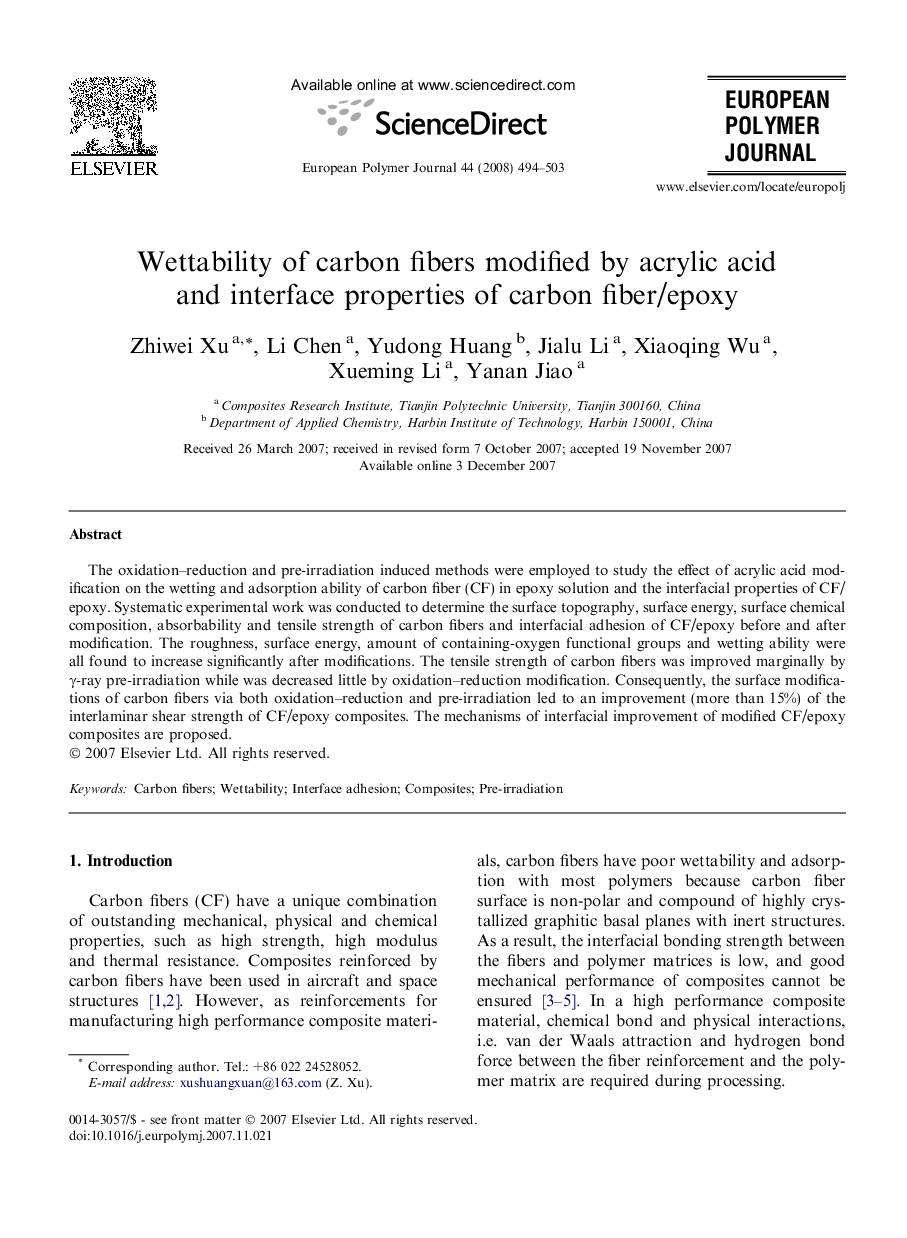| Article ID | Journal | Published Year | Pages | File Type |
|---|---|---|---|---|
| 1403324 | European Polymer Journal | 2008 | 10 Pages |
The oxidation–reduction and pre-irradiation induced methods were employed to study the effect of acrylic acid modification on the wetting and adsorption ability of carbon fiber (CF) in epoxy solution and the interfacial properties of CF/epoxy. Systematic experimental work was conducted to determine the surface topography, surface energy, surface chemical composition, absorbability and tensile strength of carbon fibers and interfacial adhesion of CF/epoxy before and after modification. The roughness, surface energy, amount of containing-oxygen functional groups and wetting ability were all found to increase significantly after modifications. The tensile strength of carbon fibers was improved marginally by γ-ray pre-irradiation while was decreased little by oxidation–reduction modification. Consequently, the surface modifications of carbon fibers via both oxidation–reduction and pre-irradiation led to an improvement (more than 15%) of the interlaminar shear strength of CF/epoxy composites. The mechanisms of interfacial improvement of modified CF/epoxy composites are proposed.
